How to Set Up Your Internet
Set up a wired network
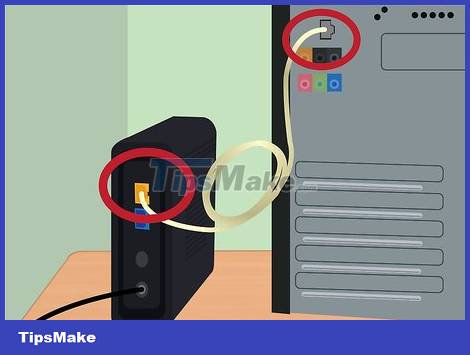
Plug the modem cable into the computer. You need to make sure that the computer is located near a network wall outlet.
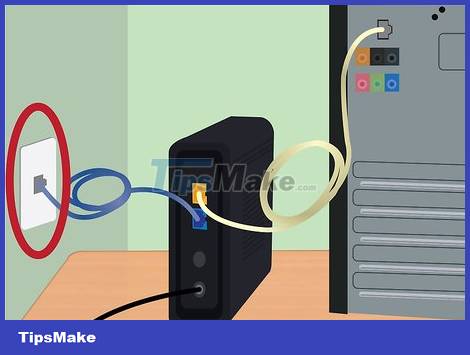
Plug the modem cable into the network wall outlet.
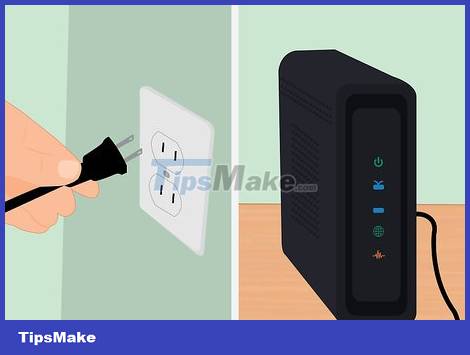
Plug in power to the modem. Most modems do not have an On/Off switch. To turn the device on/off, you just need to plug and unplug it.
After turning on the modem will go through the boot process. If the light on the modem is mostly lit and stops flashing, it means the device has finished booting. Usually there will be only one light that continues to blink.
Normally, it will take about 30-60 seconds for the modem to be fully turned on.
If it is a new modem, you need to call the network operator and provide the modem information because they will not be able to support if the device has not been linked to your account. Look for the modem's serial number and MAC address printed on the bottom or side of the modem.

Check your internet connection. Open your browser and go to a website you have visited recently, the website will be loaded from the cache. If the website is loaded successfully, it means you can access the network. If not, complete the rest of the process.
Searching for certain keywords in a search engine is also a good way to check out the network.
Set up a DSL network
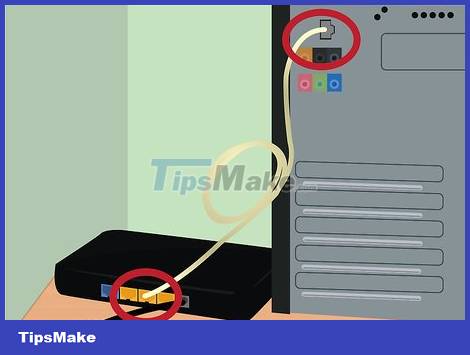
Plug the DSL modem into the computer. You need to make sure that the computer is located near a network wall outlet.
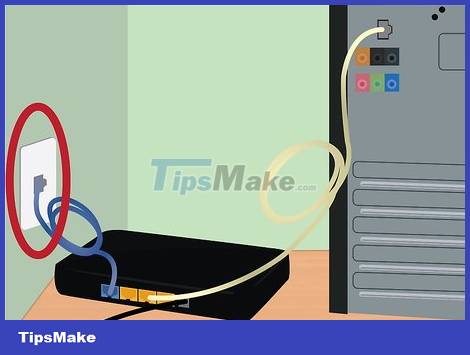
Plug the DSL modem cord into the network wall outlet.
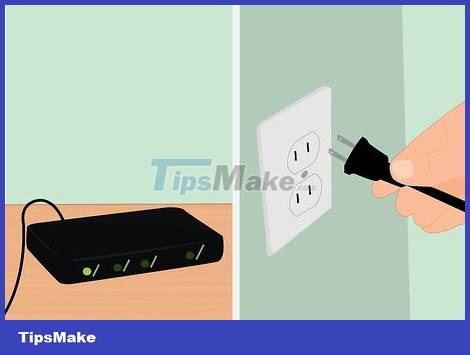
Plug in the DSL modem. Most modems do not have an On/Off switch. To turn the device on/off, you just need to plug and unplug it.
After turning on the modem will go through the boot process. If the light on the modem is mostly lit and stops flashing, it means the device has finished booting. Usually there will be only one light that continues to blink.
Normally, it will take about 30-60 seconds for the modem to be fully turned on.
For new modems, you will need to call your DSL service provider to request that the modem be associated with a network user account and password. If you do not know this information, call your service provider to ask.
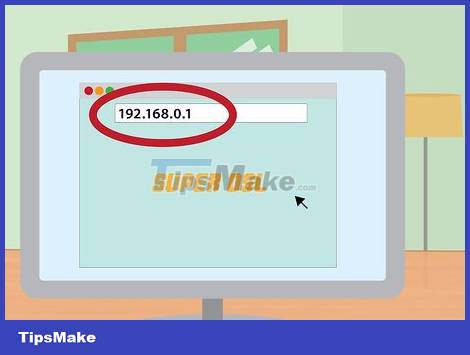
Log in to the modem's admin screen. Open your web browser. In the address field, you enter the modem's IP address (usually printed on the device or in the user manual).
Common IP addresses are 192.168.0.1 and 192.168.1.1. Click here to see a list of specific IP addresses.
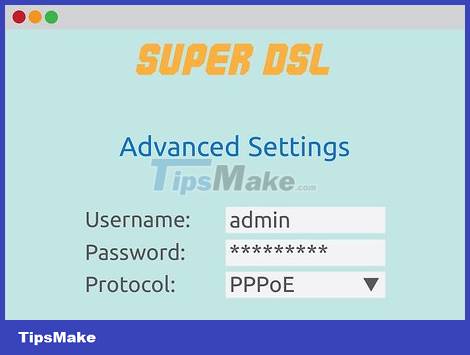
Enter the DSL network user account and password. Once connected to the modem's admin screen, look for the PPPoE field. Enter your user account name and password in the PPPoE field. The username is usually the email address.
If you do not know your user account name and password, contact your DSL carrier.
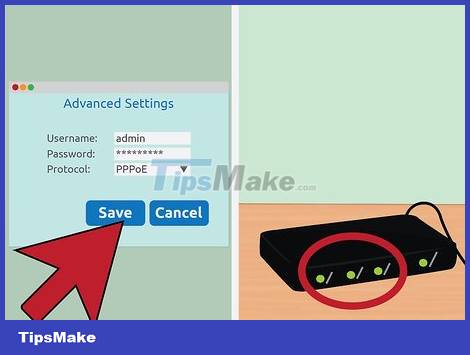
Save the settings. Save the settings after the setup process is complete. The internet light on the modem will turn green, signaling that you are online.

Check your internet connection. Open your browser and go to a website you have recently visited. The website will be loaded from program memory. If the website is loaded successfully, it means you can access the network. If not, complete the rest of the process.
Searching for certain keywords in a search engine is also a good way to check out the network.
You should read it
- 2/3 access on the Internet ... not human
- What is Viettel Sim Internet? Offers of Viettel Internet sim
- The Internet is decentralized - something rivaling the Internet we still know, is already here
- The Internet will only be the domestic network of countries in 2014
- How fast should your Internet connection be?
- Warning: Global Internet may be interrupted in the next 48 hours
- 10 ways to protect yourself on the Internet
- Netizens will 'cry again' because the Internet is fluttering
May be interested
- Netizens will 'cry again' because the Internet is fluttering
 a few months ago the internet in vietnam was in a state of flutter due to the breakdown of the sea cable. although this cable has been repaired, it is possible that in the coming time, vietnamese internet users will experience an unpleasant phen.
a few months ago the internet in vietnam was in a state of flutter due to the breakdown of the sea cable. although this cable has been repaired, it is possible that in the coming time, vietnamese internet users will experience an unpleasant phen. - At the end of 2014, the world had 3 billion Internet users
 the international telecommunication union (itu) released new statistics showing that by the end of 2014 there will be nearly 3 billion internet users, of which two thirds come from developing countries.
the international telecommunication union (itu) released new statistics showing that by the end of 2014 there will be nearly 3 billion internet users, of which two thirds come from developing countries. - [Infographic] How does the Internet work?
![[Infographic] How does the Internet work?](https://tipsmake.com/img/no-image-80-80.png) the curiosity of our people often reaches far away to the deep-sea mysteries or in the vast universe. but in our daily lives there are things that always contain mysteries that we don't pay attention to, the internet is a typical.
the curiosity of our people often reaches far away to the deep-sea mysteries or in the vast universe. but in our daily lives there are things that always contain mysteries that we don't pay attention to, the internet is a typical. - Instructions for using Internet Banking Vietcombank
 internet banking of vietcombank is a banking service operating through the internet, all customer transactions will be done via an internet-connected computer, refer to the following article of the network administrator to better understand how to use internet banking vietcombank.
internet banking of vietcombank is a banking service operating through the internet, all customer transactions will be done via an internet-connected computer, refer to the following article of the network administrator to better understand how to use internet banking vietcombank. - Internet speed in the UK loses ... The Moon
 almost all of us experience bad cases with the internet, especially when outside the big cities. but one thing is quite interesting when the moon is where people just set foot, but cannot live yet and have an internet connection faster than the uk.
almost all of us experience bad cases with the internet, especially when outside the big cities. but one thing is quite interesting when the moon is where people just set foot, but cannot live yet and have an internet connection faster than the uk. - The US can eliminate Net Neutrality, and this will completely change the way you use the internet so far
 if net neutrality is removed, the us will be the starting point to open a very different future for the internet.
if net neutrality is removed, the us will be the starting point to open a very different future for the internet. - Test your level of understanding of the Internet?
 in the following article, network administrator will send you multiple choice questions on internet knowledge.
in the following article, network administrator will send you multiple choice questions on internet knowledge. - Review Kaspersky Internet Security 2021: A comprehensive set of security tools for computers
 kaspersky internet security 2021 is a premium single-license multi-utility security suite that protects against malware, phishing, and ensures safe browsing. this multi-layered security software keeps your important data safe on the internet.
kaspersky internet security 2021 is a premium single-license multi-utility security suite that protects against malware, phishing, and ensures safe browsing. this multi-layered security software keeps your important data safe on the internet. - How to Have Fun on the Internet
 the internet has endless activities you can engage in for fun. however, there are so many things to do on the internet that it may seem overwhelming to find something that suits your mood or taste. fortunately, by thinking about different...
the internet has endless activities you can engage in for fun. however, there are so many things to do on the internet that it may seem overwhelming to find something that suits your mood or taste. fortunately, by thinking about different... - What is Starlink? How does satellite internet work?
 if you look up at the beautiful night sky at any point in 2020, you may have seen several new low-earth orbit satellites that form part of spacex's starlink project.
if you look up at the beautiful night sky at any point in 2020, you may have seen several new low-earth orbit satellites that form part of spacex's starlink project.


![[Infographic] How does the Internet work?](https://tipsmake.com/data/thumbs_80x80/[infographic]-how-does-the-internet-work_thumbs_80x80_nTakpDMti.jpg)







 How to Set Up a Wired Network (Ethernet)
How to Set Up a Wired Network (Ethernet) How to Reset Router Password
How to Reset Router Password How to Set Up a Wireless Connection to a Printer
How to Set Up a Wireless Connection to a Printer How to Find the Subnet Mask
How to Find the Subnet Mask How to Ping an IP Address
How to Ping an IP Address How to Connect PC to TV Without Wires
How to Connect PC to TV Without Wires